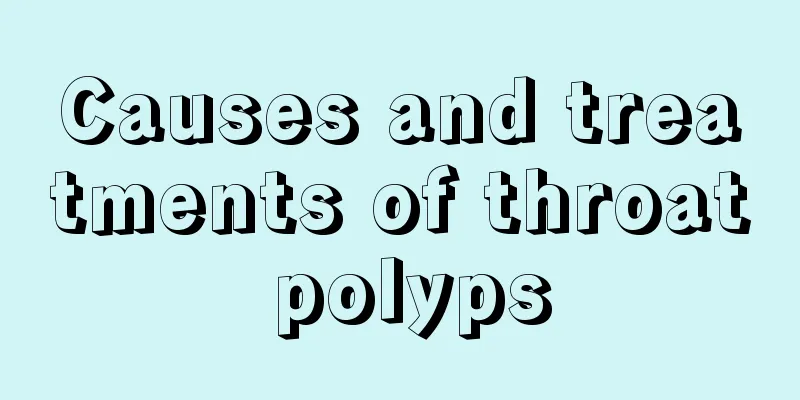What to do with gingival bone hyperplasia

|
Gingival hyperplasia is not actually gingival bone hyperplasia, but is caused by an increase in gingival tissue, which is generally caused by inflammatory and non-inflammatory factors. Because there are many factors causing gingival bone hyperplasia, treatment needs to be addressed according to the cause, and treatment must be carried out as soon as possible. If it turns into a chronic disease, it will increase the difficulty of treatment. So, what should we do if we have gingival bone hyperplasia? Treatment for gingival hyperplasia varies depending on the specific cause. 1. Chronic gingivitis (1) Remove plaque, stones and other pathogenic factors that promote plaque accumulation. (2) Instruct patients to control plaque themselves. (3) Inquire whether the patient has systemic risk factors that promote disease progression, such as smoking, systemic diseases and conditions (immunosuppression), stress, nutrition, pregnancy, drug abuse, HIV infection, and medication use, and consider taking proactive targeted measures. (4) If gingival hyperplasia is still obvious after basic periodontal treatment, surgical resection may be considered. 2. Adolescent gingivitis Oral hygiene instruction for adolescence. Treatment includes removing local irritants, performing supragingival cleaning, and scraping if necessary. If necessary, local medication can be used as an auxiliary treatment, such as gargling, gingival pocket irrigation and local medication. To remove factors that retain plaque, gingivectomy may be performed if necessary for patients with long-term gingival hypertrophy and unfavorable plaque control. 3. Pregnancy gingivitis Consider delaying periodontal treatment during the first or last three months of pregnancy to avoid miscarriage or premature birth. During the 4th to 6th month of pregnancy, local irritants such as plaque and tartar should be removed, but the operation must be gentle to minimize bleeding and pain. Emergency periodontal treatment can be performed at any time during pregnancy. Use antibiotics and other medicines with caution. Emphasize self-plaque control and regular periodontal maintenance. For hyperplastic gingiva, surgical removal should be postponed until after delivery. If the gingival aneurysm during pregnancy is large and requires surgical removal, it can be considered to be performed within 4 to 6 months of pregnancy. 4. Drug-induced gingival hyperplasia Replace the medication that causes gingival hyperplasia without affecting the control of systemic diseases. Remove local irritants such as plaque and tartar, eliminate factors that cause plaque retention, and guide patients on plaque control. After treatment, gingival hyperplasia in most patients can be significantly improved or even disappear. For patients with obvious gingivitis, auxiliary drug treatment can be used, such as flushing the gingival pockets with 3% hydrogen peroxide solution and inserting antibacterial and anti-inflammatory drugs into the pockets. For those whose gingival hyperplasia cannot be completely eliminated by the above treatments, surgical treatment of gingival resection and shaping or flap combined with gingival resection can be performed. Get clear doctor's instructions to avoid recurrence after surgery. 5. Gingival fibromatosis Remove local irritants such as plaque and tartar, eliminate factors that cause plaque retention, and guide patients on plaque control. Surgical treatment mainly includes gingivoplasty, and flap combined with gingivectomy can also be used. 6. Gingival tumor Remove the irritating factor and perform surgical resection. Surgical resection should be thorough, and an incision should be made on the normal tissue around the base of the tumor. The tumor, along with the periosteum, part of the alveolar bone at the base, and periodontal ligament tissue in the corresponding area should be removed to prevent recurrence. Place periodontal protective agent on the wound surface. If the teeth around the gingival tumor have become loose, they should be extracted at the same time, and the affected periodontal membrane and adjacent bone tissue should be removed at the same time. After recurrence, the above method is generally used for excision. If the disease recurs multiple times, the teeth affected by the disease should be extracted at the same time. |
<<: Is it good to use vinegar hot compress for bone hyperplasia?
>>: My chest hurts when I breathe in
Recommend
What are the symptoms of emotional dependence?
Emotional dependence is a mental illness, which i...
What are the atypical symptoms of lung cancer
There are five main atypical manifestations of lu...
Analyzing the pathology of brain cancer
In recent years, brain cancer has become one of t...
Is skin cancer definitely hereditary?
If a family member gets skin cancer, it will brin...
How are super-large blackheads formed
Blackheads are a common skin problem. There are m...
What causes right tongue cancer
The occurrence of right tongue cancer is mainly r...
Expert answer: The cause of nasopharyngeal carcinoma is related to viral factors
According to recent medical research, the cause o...
One ear feels blocked?
One ear seems to be blocked. This situation is pr...
Does loofah and egg soup increase milk secretion?
Luffa is a common vegetable with high nutritional...
What is the first aid for imidacloprid poisoning
Some crops or fruit trees planted in rural areas ...
How to prevent colon cancer through diet
I am 48 years old and two of my friends have suff...
Treatment for urinary tract infection?
Urinary tract infection is a common disease. Once...
Dietary principles that pituitary tumor patients should adhere to
Pituitary tumor is a benign tumor that is common ...
Remove the black scale from the pressure cooker
People who don’t have a pressure cooker at home k...
What to do if a child has lymph nodes
Many parents are very attentive when taking care ...









